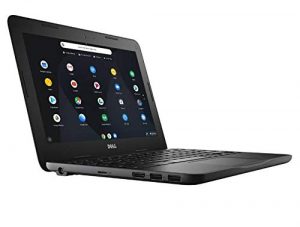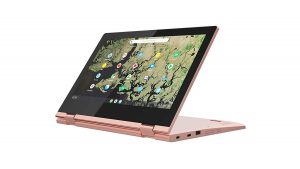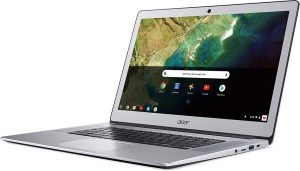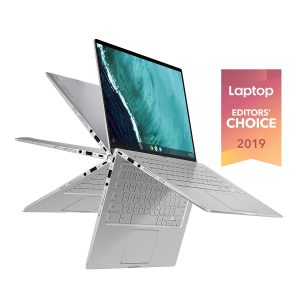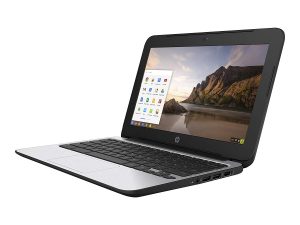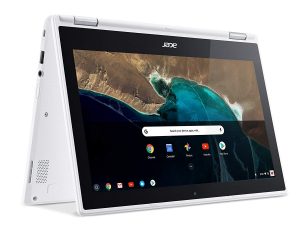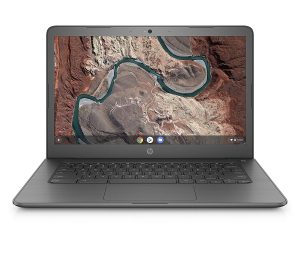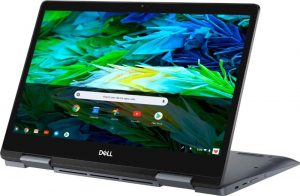Best Graphics Card For VR | Expert Reviews
VR stands for virtual reality, and as the name suggests, it is a simulation of a real-world situation or any other scenario, that makes you feel you are an active part of it. VR is generally used for watching movies or playing games and also sometimes for educational purpose to showcase some real-life situations, you might face.
A graphics card is a hardware that is responsible for producing the image on your monitor or your output device, which might as well, be a VR headset.
More...
Not all graphics cards are compatible with VR headset, but still, there are a large number of graphics cards like GTX 1080 Ti, RTX 2080 Ti, RTX 2080, RTX 2070 and RTX 2060 cards, that are compatible with the VR headsets. Different graphics cards have features and provide different resolutions with different cooling systems.
I have done the treacherous job of finding out the best graphics card for VR, available in the market. Lets now have a look at the list of the best graphics card for VR, available at your disposal, along with their features, pros, and cons.
Pick the right one wisely after reading this best graphics card for VR article.
Table of Contents
- BEST GRAPHICS CARD FOR VR - REVIEW
- 1. SAPPHIRE RADEON RX 580
- 2. GIGABYTE RADEON RX 570
- 3. XFX RADEON RX 580 BLACK EDITION
- 4. MSI GAMING RADEON RX 560
- 5. EVGA GEFORCE GTX 1050 TI
- 6. XFX RADEON RX 590 FATBOY CORE EDITION
- 7. MSI GAMING GEFORCE GTX 1660 TI
- 8. ASUS ROG STRIX RADEON RX 570
- 9. ZOTAC GEFORCE GTX 1070 AMP
- 10. POWERCOLOR AMD RADEON RED DRAGON RX 580
- CONCLUSION
BEST GRAPHICS CARD FOR VR - REVIEW
1. SAPPHIRE RADEON RX 580
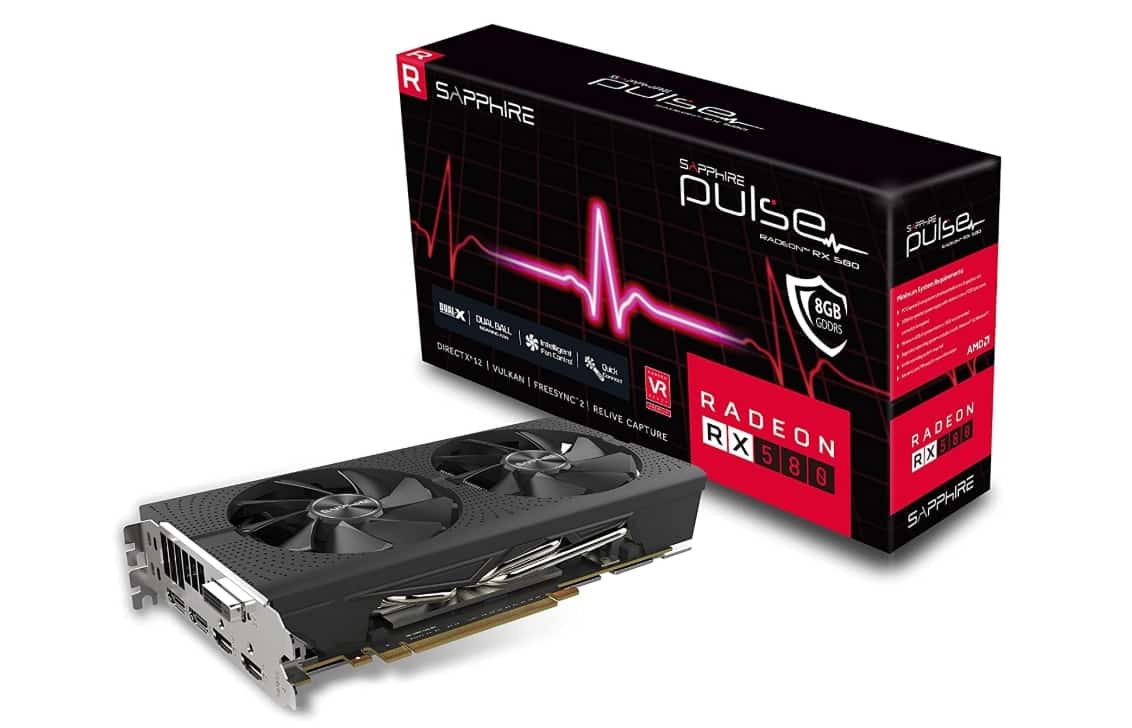
The Sapphire Pulse Radeon RX 580 easily takes up the fifth spot in this list of the best graphics card for VR. It is one of the biggest names in this industry when it’s about creating AMD graphic cards. This graphic card is great, especially for 1080p gaming at ultra settings.
The graphics card provides great performance at a good budget-friendly price. It features a good cooling solution, HDR, 8 GB of memory, FreeSync 2, and much more. The graphic card also boasts a boost clock speed of 1336 MHz.
The RX 580 has a huge heat sink, which uses 4 thick heat pipes and passes through a large contact plate to cool the GPU, VRM and memory. It has a thick metal plate with heart rate pulse on it. The Rx 580 is powered by an 8 pin PCI connector.
The Sapphire Pulse RX 580 is one of the best RX 5xx cards to be tested, because of its inexpensive price but great performances, providing tough competition to even expensive graphics cards.
The Vega chipsets are expected to be improved, but overall the graphics card is a great deal looking at the Radeon Chill, HDR video support, ReLive etc features.
PRODUCT DETAILS:
Pros
Cons
2. GIGABYTE RADEON RX 570
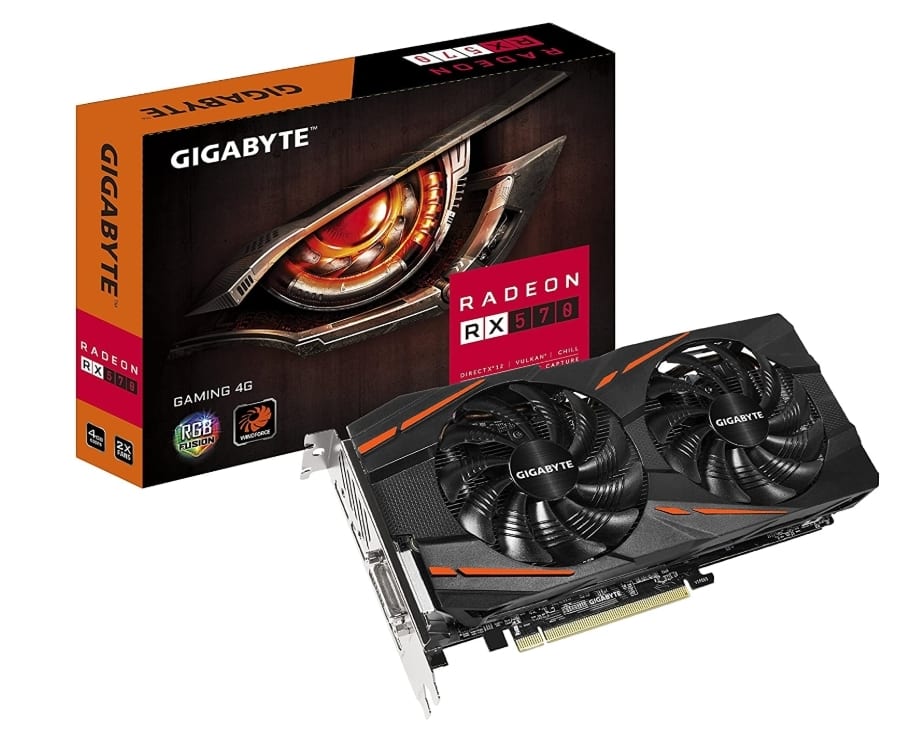
The ninth spot in this list of the best graphics card for VR is the Gigabyte Radeon RX 570 gaming. The graphics card has a core clock speed of 1255 MHz in OC Mode and 1244 MHz in the gaming mode.
It features a great cooling system, which is the WindForce 2x cooling system. This provides the all-around cooling solution for all key components of the graphics card and takes care if the VRAM as well, to ensure long life and stable overclock operation. The copper back plate dissipates heat from the backside of the GPU.
The 90mm unique fan blade design of the graphics card ensures that the airflow is spilled by edges of the triangle fan and is guided through the 3D stripe curve on the surface of the fan.
The RGB fusion enables you to choose from 16.8 million colors to customize. It also has a great stylish backplate that offers rigidity and protection to the structure and adds to the clean look of the product.
It boasts smart LED power indicators to alert you when PCI-E voltage is unstable. It is ultra-durable with the highest-grade chokes and capacitors, ensuring a durable system lifespan.
PRODUCT DETAILS:
Pros
Cons
3. XFX RADEON RX 580 BLACK EDITION
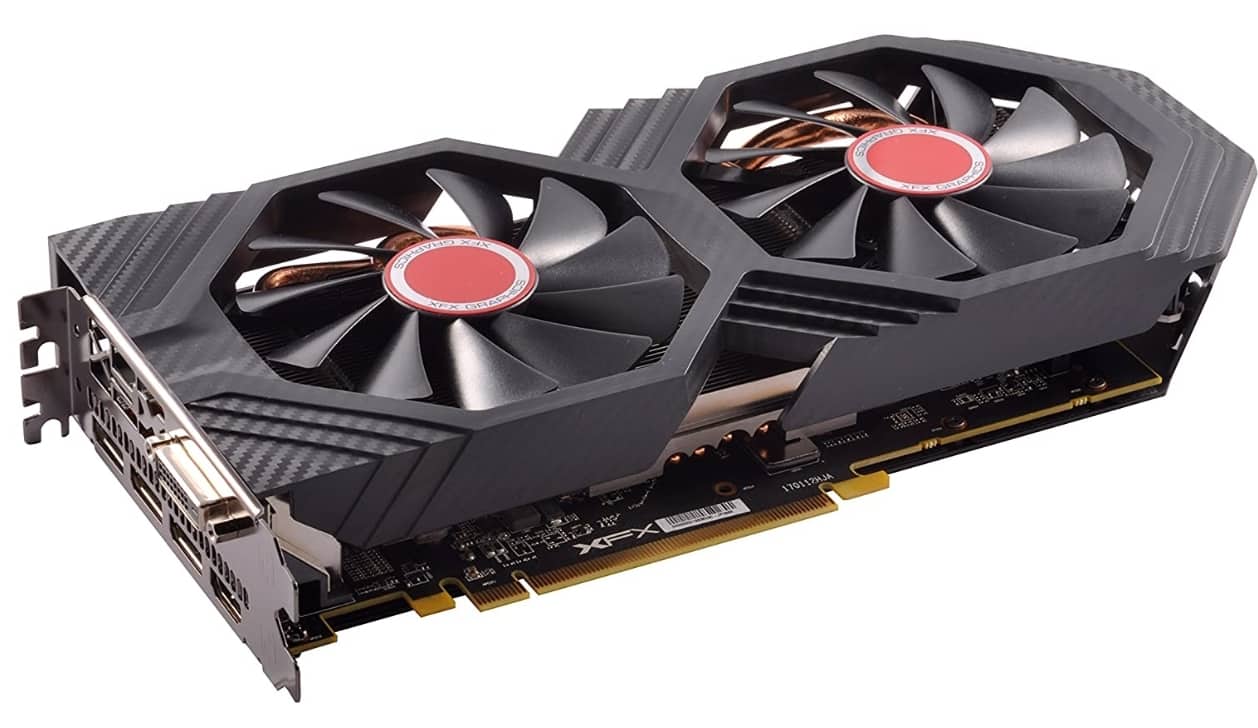
If you are concerned about the RAM, then check out this one. Holding the second place in this list of the best graphics card for VR, the XFX Radeon RX 580, 8 GB black edition. This graphics card is based on AMD’s 4th generation Graphics Core Next (GCN).
This graphics card for vr is meant for people who currently own a much older and slower graphics card, and want to play games at 1080p or 1440p resolutions. The RX 580 uses a total of 8 GB of high speed GDDR5 memory, which is used to handle the textures to make 2560 x 1440 the new resolution target.
The graphics card for vr features a True Clock, which is hardware controlled, and gives clock speed performance optimization, which means your card is always running at an optimized performance level.
The RX 580 boasts about its Radeon Chill technology, an intelligent power saving feature, for the graphics that dynamically regulate the frame rate depending on the movements you make in-game.
This helps you save power, as well as get good performance form the graphics card. The RX 580 enhances the thermal efficiency by about 40%.
In the end, the RX 580 GTS black edition 8 GB graphics card is highly recommended for those who are looking for 1080p gaming solutions with a very reasonable price tag as well. It is also very robust because of the metal back-plate, and even the cooling solution does a superb job.
PRODUCT DETAILS:
Pros
Cons
4. MSI GAMING RADEON RX 560
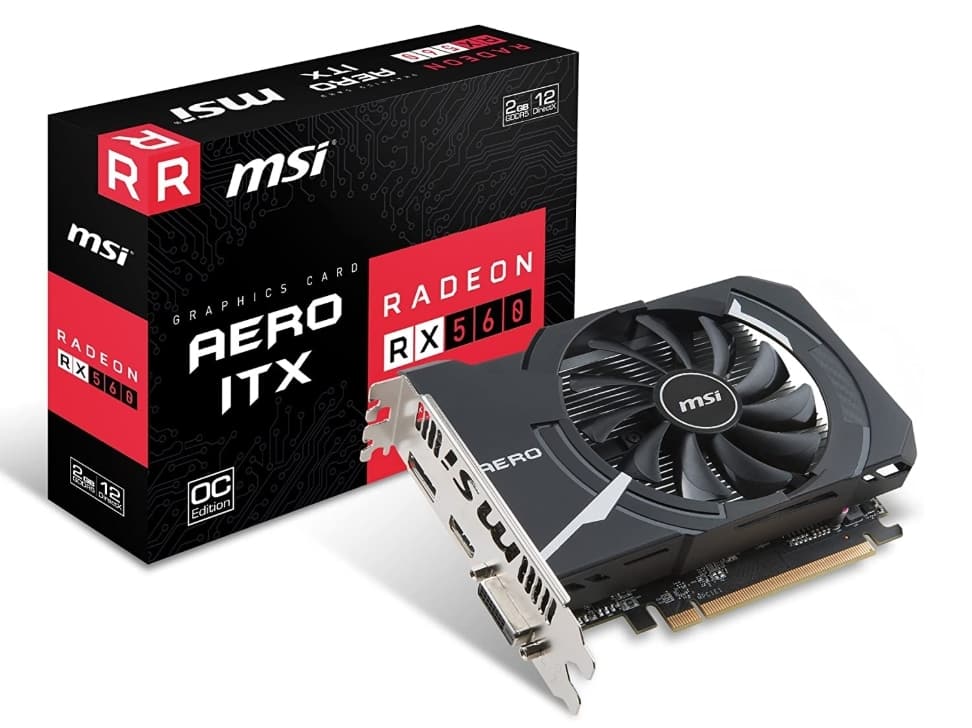
MSI gaming Radeon RX 560 aero ITX 2G OC is one of the best graphic cards for VR in th list. It features an AMD Radeon RX 560 chipset. The RX 560 uses a 2 GB of high speed GDDR5 memory. The graphics card for vr is engineered with 4th generation GCN architecture which enables gamers to play loads of games easily.
The AMD FreeSync technology puts an end to bad game-play giving ultimate performance at possibly any frame rate. The graphics card is compatible with HDR, which enables you to a colorful and vivid experience.
The RX 560 is a small pack but packs a punch, as it perfectly symbolizes ‘appearances can be deceptive’. It can virtually fit into any system, and ultimately give you smooth gaming experience. This graphics card for vr delivers ultra-high resolution of 4 X 1080p, providing you with the most minor of details while gaming.
These graphic cards use military class 4 components, which makes it ultra-durable and can handle the longest durations of gaming without any fuss.
MSI’s Afterburner is one of the world’s most recognized and widely used graphics cards for vr . It is because of the fact that is provided overclocking utility, that gives you complete control of your graphics cards.
It also enables you to have a detailed overview of your hardware. The graphics card has a few additional features such as customizing fan profiles, video recording and benchmarking as well.
PRODUCT DETAILS:
Pros
Cons
5. EVGA GEFORCE GTX 1050 TI
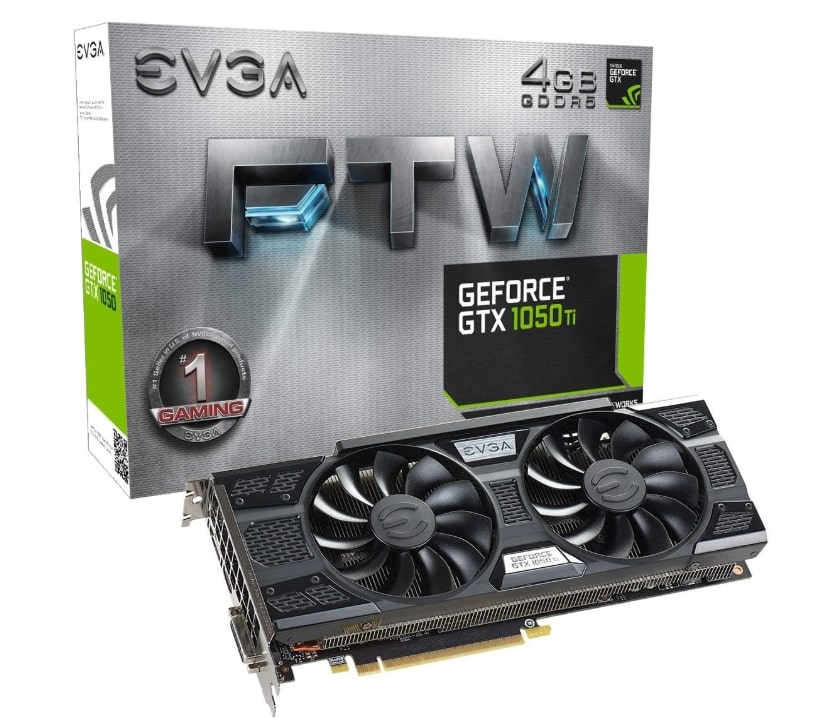
The best doesn’t have to be the most expensive always, and Evga Geforce GTX 1050 Ti is there to remind us of that. This graphic card is full HD capable, and yet, very efficient. The GTX 1050 Ti is a perfect fit for gamers who use a desktop without any graphics card at all.
The graphics card chip is based on Nvidia’s Pascal GPU design. It gives you 768 CUDA cores and a base clock speed of 1,290MHz. The maximum boost clock is of 1,392MHz. The graphics card has full memory of 4GB GDDR5, which runs at 7,000MHz along with a 128-bit memory bus.
The GTX 1050 Ti graphics card offers a maximum thermal design power of 75 Watts. The graphics card is very budget-friendly and is one of the best options to play AAA games at full HD.
It enables you to play modern and classic games at full HD at 60 fps. It allows you to play games for longer durations of time, due to the Evga “ACX 3.0”.
For quite gaming, the graphics card provides you with SHP, which gives increased heat pipes and copper contact area, and an optimized fan curve for cooler operation.
To provide more air with less energy, it is equipped with swept fan blades, double ball bearings, and an extremely low power motor. Overall, this graphics card is a great budget-friendly option for gamers with no graphics card on their desktop.
PRODUCT DETAILS:
Pros
- Plays 1080p high well and is very affordable.
Cons
6. XFX RADEON RX 590 FATBOY CORE EDITION
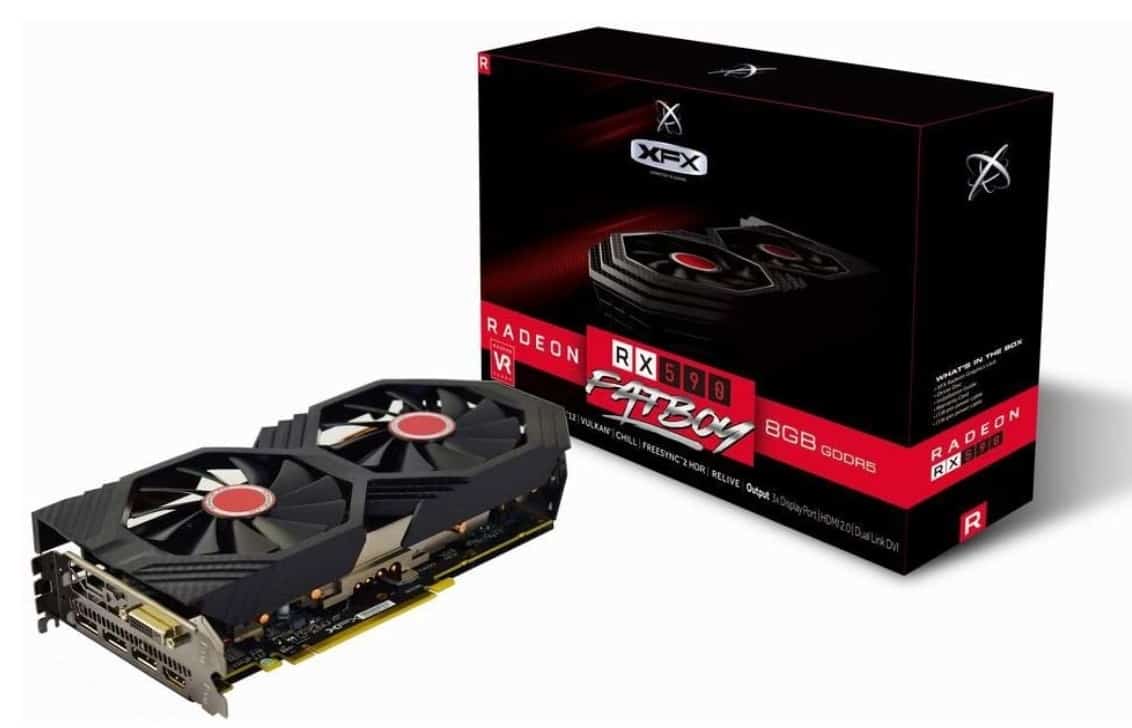
Next up in the list of the best graphics card for VR is the XFX Radeon RX 590 Fatboy core edition. The RX 590 is the company’s first 12nm mainstream gaming GPU. The graphics card is based on AMD’s 4th generation GCN (Graphics Core Next) architecture.
The RX 590 is a 2.5 slot card, which means it takes up 3 expansion slots on the motherboard. It features dual large fans, which make the graphics card look like a surprised owl. Heat transfer to the cooling apparatus is done by the thick composite copper pipes.
The Radeon RX 590 Fatboy is equipped with a branded back plate to keep all the heavy metal inside from coming out and also to help dissipate the produced heat. The manufacturer recommends a power supply of 600 Watt for the graphics card and you will need an 8 pin and a 6 pin power connector to run the graphics card.
The graphics card is a great option if you want 1080p gaming and also have a monitor faster than 60 Hz. It is well known for its superior performance in almost every game. The graphics card for vr also boasts a much appreciated dual BIOS, and much needed large number of ports. It is very large, but the amount of metal is required to push the Polaris all the way.
PRODUCT DETAILS:
Pros
Cons
7. MSI GAMING GEFORCE GTX 1660 TI
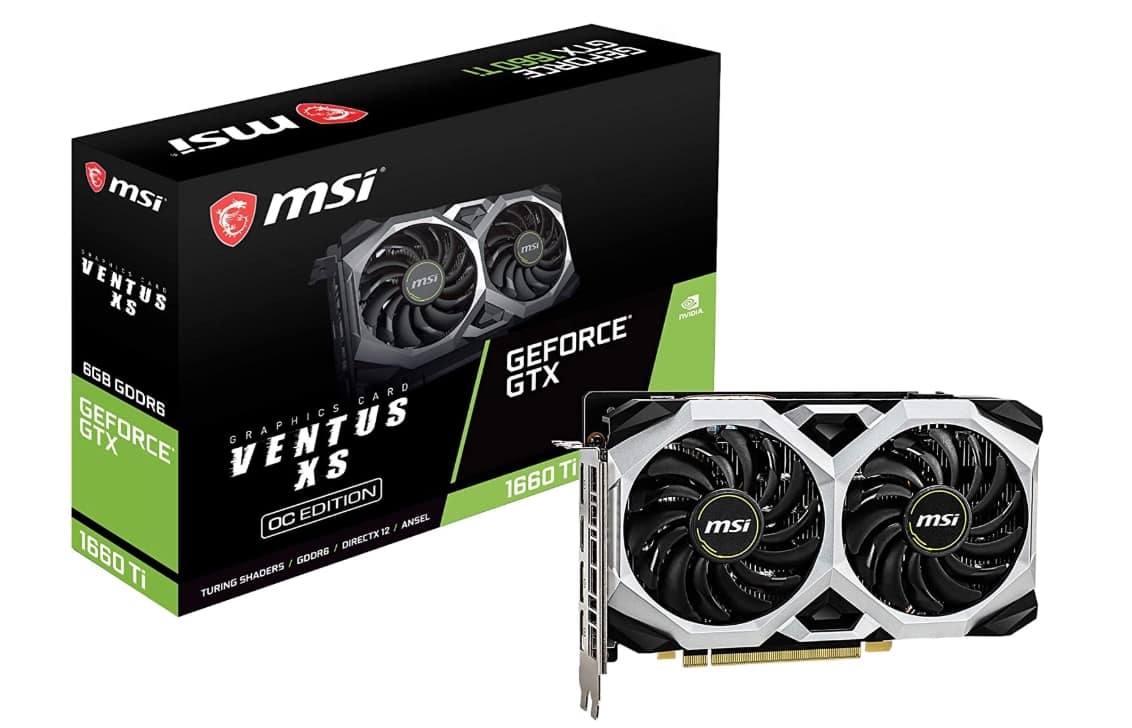
Looking for an energy efficient graphic card for VR in this list of the best graphics card for VR? Then look no further because the MSI Gaming GeForce GTX 1660 Ti Ventus XS 6G OC is extremely energy efficient.
The GeForce GTX 1660 Ti is the largest implementation of the TU116. The memory capacity is around 6 GB and uses the 12 Gbps GDDR6 memory. It is based on the Turing architecture, but it also lacks a couple of great features, which are RT cores and tensor cores.
The L2 cache and GigaThread Engine hold the 3 GPCs with the chip's PCI-Express 3.0 x 16 host and 192-bit GDDR6 memory interfaces.
The 1660 Ti does not provide you with real-time ray-tracing, as it lacks the RT cores, and doesn’t provide you with the DLSS as well. But the graphics card surely has something great to offer, which is the Variable Rate Shading.
The 1660 Ti uses a single 8 pin power connector. The configuration is specified up to 225 Watt. The backplate is made up of plastic and protects the card against damage.
The graphics card is an impressive mid-range option, which is based on the TU116 graphics processor, which was specifically designed to meet the demands of that market, especially the price. It is great for gaming and the 6 GB graphics certainly adds value to the already great product.
PRODUCT DETAILS:
Pros
Cons
8. ASUS ROG STRIX RADEON RX 570
The Asus Rog Strix Radeon RX 570 4 GB OC is just like all other Asus Rog products, even this graphics card is a beautifully built product with a black color scheme. The RX 570 uses the Polaris architecture of AMD’s high-end gaming graphics cards, and features a 1168MHz base and a 1244MHz boost clock.
The graphics card has a factory overclocked to 1310MHz on OC mode and also has a 4 GB GDDR5 memory clocked at 7000MHz and a 256-bit memory bus.
The ROG Strix RX 570 has a Direct-CU heat sink along with a patented design for the wing blade that is dust resistant and provides a good thermal performance. The output of the graphics card allows you to have a maximum of five displays using the AMD’s Eyefinity technology.
Like all other RX 5xx products, this graphics card also is equipped with features like Freesync 2, bridgeless 2-way AMD, Crossfire Radeon Chill and the entire Radeon software adrenalin edition suite.
The graphics card doesn’t have a backplate, and is powered by a single 8-pin PCIe power connection. The graphics card, when tested with several games shows average frame rates at 1080p, high presets in all the games.
The Asus ROG Strix RX 570 4 GB will not disappoint you if you want to get into 1080p gaming on AAA game titles and it is also one of the best graphic cards for VR.
PRODUCT DETAILS:
Pros
Cons
9. ZOTAC GEFORCE GTX 1070 AMP
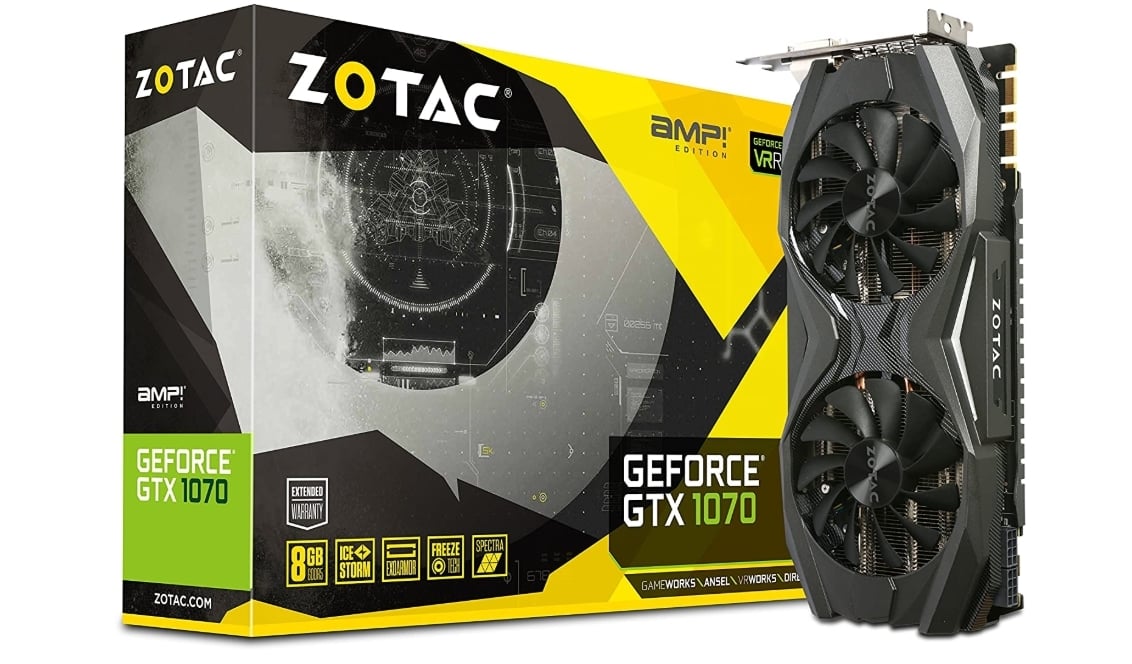
Perhaps one of the most popular graphic card for vr on the costlier side is the Zotac GeForce GTX 1070 AMP Edition. This graphic card for vr uses the 16nm FinFET process and the highly appreciated Pascal architecture.
The graphics card features 1920 CUDA cores, 256-bit memory bus, and 8 GB of GDDR5 video memory. The GTX 1070 is manufactured for the higher end of the gaming market. The GPU operates at 1506 MHz which can be boosted to 1683 MHz, while the memory clock works at a speedy 8 Gbps.
The GTX 1070 AMP takes up only 2 PCI slot spaces and features only 2 cooling fans. The fans work with FreezeTech, which enables the graphics card to use the fan only when it reaches a certain temperature. It also features the Ice-Storm cooling system with 5 heat pipes.
The I/O panel of the card contains 3 display ports, an HDMI and a DVI connector as well. The card is powered using a couple of 8-pin PCI-E power connectors. It uses the functional aesthetic backplate called Exoarmor, mounted on the back of the card.
The Zotac GeForce GTX 1070 AMP is a great choice for mid level gamers. It is a decent graphics card that offers high performance and is recommended to anyone who wants to overclock the GPU.
PRODUCT DETAILS:
Pros
Cons
10. POWERCOLOR AMD RADEON RED DRAGON RX 580
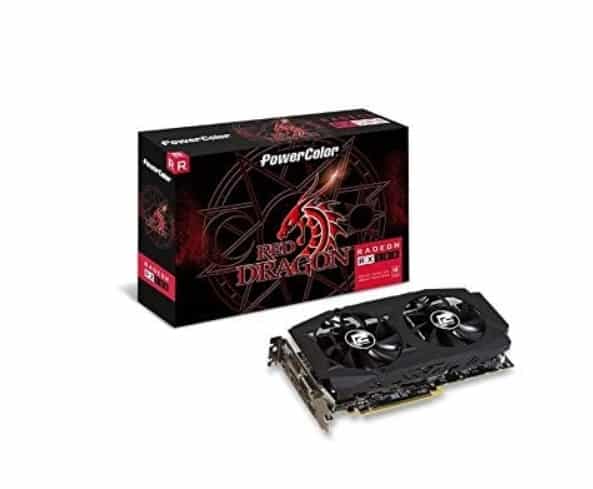
The last spot in this list of the best graphics card for VR is taken up by the PowerColor AMD Radeon red dragon RX 580. The graphics card is based on AMD’s latest GCN 4 architecture designed for GloFo 14nm FinFET.
This enables the graphics card to deliver great VR capability, increased performance levels, seamless support for gaming monitors and CPU free game streaming or recording as well.
The AMD Radeon red dragon RX 580 features LiquidVR technology that enables you to get premium VR experiences by simplifying VR content creation and unlocking many unique AMD hardware features.
The graphics card features AMD XConnect Ready, AMD App Acceleration, AMD Eyefinity Technology, AMD HD3D Technology, and the GCN architecture.
Using the AMD XConnect technology you can easily connect and use the graphics card. The AMD Eyefinity Technology will give you the freedom to run multiple displays from a single graphics board to expand the gaming FOV. The GCN architecture improves the overall performance and efficiency of the graphics card.
The graphics card also boats all the features of a Radeon 5xx series like Radeon Chill, Radeon VR Ready Premium, Mute fan technology and lots more. The Radeon Chill technology increases the efficiency and lowers the temperatures of the graphics card.
PRODUCT DETAILS:
Pros
Cons
CONCLUSION
This was my list of the best graphics card for VR with their features, advantages, and disadvantages. I hope this list will help you chose amongst the best of the graphics cards.
Also share your views about this article in the comment section 🙂

